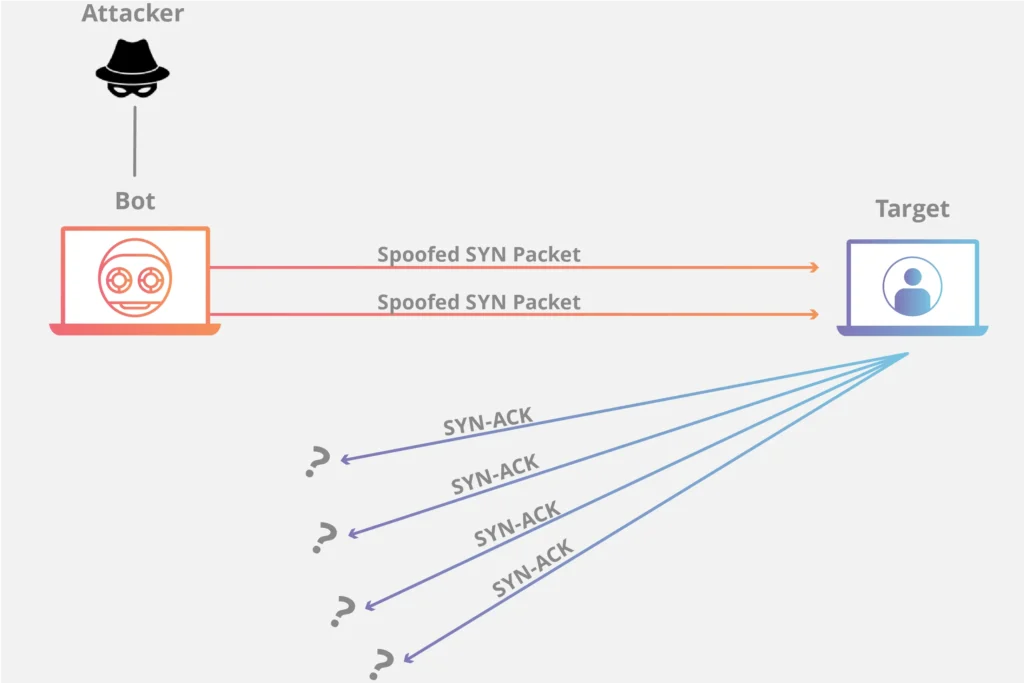So, picture it: you’re either streaming a good show or going online to buy something in a big sale and the website or the app crashes down. Annoying, right? Now, think of a business owner, helplessly watching their website crumble under a burst of bad traffic. That’s roughly how a Distributed Denial-of-Service or better known as DDoS attack unfolds. However, the good news is that we do not have to surrender ourselves to fate anymore.
1. Seeing Trouble as It Happens
Isn’t it funny that you think that someone is watching over you each time you log in to your system? That is AI, your silent watcher, scrutinizing the network traffic on your behalf. It doesn’t just look for superficial cues of disaster; it senses each minute or little packet of data that goes in and out: to say the least; it’s like a mall security officer that keeps an eye on visitors. It can tell at a glance what a holiday rush is like and who a troublemaker could be. It learns what is normal; instantly an alarm is pulled in the moment anything goes wrong.
2. Mitigating Slow, Automated Responses
When you are under attack from DDoS-a name that gives many an administration shudders-time is of the essence. The wait is thereby a waste where DDoS is concerned with detection and response, as you would do while waiting for a plumbing fix for your house. But AI Video Generators activates guaranteed-fix fraud calls without a long, tedious search for a human to reach him. On detection of the attack, fraud identification will be priced from the AI’s arsenal-breach protection, site redirection and user-server isolation when activated. Think glaring-footed the super-hero. These AI engines will even tell the user about the situation before the human gets a chance to type, “Okay, we seem to have a problem here.”
3. Saving the Good Ones and Dispelling the Bad
This is the hardest part of a DDoS attack-finding which are the real users and which are the attackers. You’ve got whatsoever a bouncer having to unscramble a few of the fake IDs among a huge load of partygoers; AI shines at this. It monitors the user behavior, and their behaviors, recognizes established patterns and keeps the legit customers under the clean flight plan. So during an attack, your loyal customers have no problem shopping, live streaming, or surfing.
4. Learning and Getting Clever by each day
This is what makes AI all that more interesting. Learning never stops! Each and every assault upon it elevates it a notch higher. The attackers through frequent changes have to switch origins, AI can do it even quicker. Kind of like those grand Chess masters who take every successive up and move ahead.
5. Save Time, Money, and Sanity
And now we come to practicality. Traditional DDoS protection is effusively costly, yet due to Artificial Intelligence, not only does it become elegant, but it also comes cheap. In this scenario, the client saves because of the lowered risk of downtime, but either way, the IT department is happier knowing AI has their back even if their budget is under strain.
Why This Is Important to All of Us?
A DDoS attack is not corporate-focussed, but rather a universal problem. We all suffer when websites go down-both commerce and communication we hold dear. That makes AI’s introduction into the realm of cybersecurity sound like the common good. For the next time you make an online purchase, stream a movie, or browse without interruptions a passing thought to a silent guardian, who works from backstage. AI not only stops attacks against the systems but also creates a safe and trustworthy internet for everyone.

